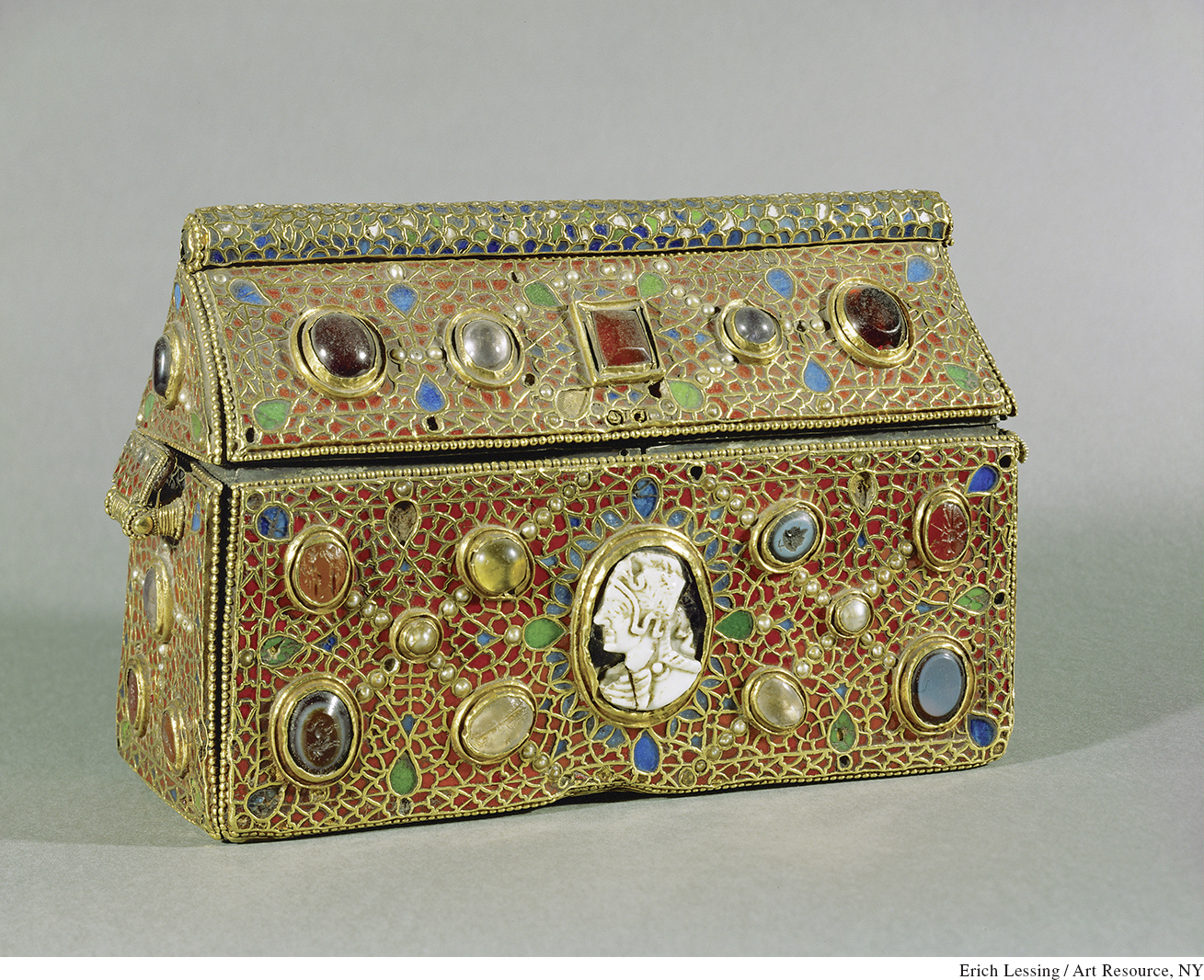Introduction for Chapter 8

AT THE END OF THE SIXTH CENTURY, Gregory, bishop of Tours, wrote about Clovis, the first king of the Franks. Under Clovis, the Franks took over Gaul and turned it into a barbarian kingdom. Yet, about a century later, Gregory insisted that Clovis was a legitimate Roman ruler. He described a day in which Clovis stood in the church of Saint Martin at Tours:
[He was] clad in a purple tunic and the military mantle, and he crowned himself with a diadem. He then rode out on his horse and with his own hand showered gold and silver coins among the people present all the way from the doorway of Saint Martin’s church to Tours cathedral. From that day on he was called Consul or Augustus.
Consul or Augustus! Gregory thought that the Roman Empire lived on in the person of the barbarian Clovis. His words reveal that at the time people did not recognize the enormous transformations that were taking place in the sixth and seventh centuries. In fact, as the western and eastern parts of the Roman Empire went their separate ways, a third power—Islamic—took shape as well. These three powers have continued in various forms to the present day: the western Roman Empire became western Europe, the eastern Roman Empire became eastern Europe and Turkey and helped create Russia, and the Islamic world endures across North Africa and the Middle East and elsewhere as well.
Diverse as these cultures are today, they share many of the same roots. Gregory had a good point: the successor states were heirs of Rome. All adhered to monotheism. The western and eastern halves of the Roman Empire had Christianity in common, although they differed at times in interpreting it. Adherents of Islam believed in the same one God as the Jews and Christians.
The seventh and eighth centuries illustrate the Roman Empire’s persistence and transformation. Changes in the eastern half of the empire were so important that historians have given it a new name—Byzantine Empire. The term Byzantine Empire or Byzantium, which comes from the old Greek name for Constantinople, rightly implies that the center of power and culture in the eastern Roman Empire was now concentrated in this one city. Over the centuries, the empire expanded, shrank, and even nearly disappeared—but it hung on in one form or another until 1453.
CHAPTER FOCUS What three cultures took the place of the Roman Empire, and to what extent did each of them both draw on and reject Roman traditions?
During the period 600–750, which historians consider the beginning of the Middle Ages, all three heirs of the Roman Empire combined elements of their heritage with new values, interests, and conditions. (See “Terms of History: Medieval.”) Their differences should nevertheless not obscure the fact that the Byzantine, Muslim, and western European cultures were partly based on a common heritage.